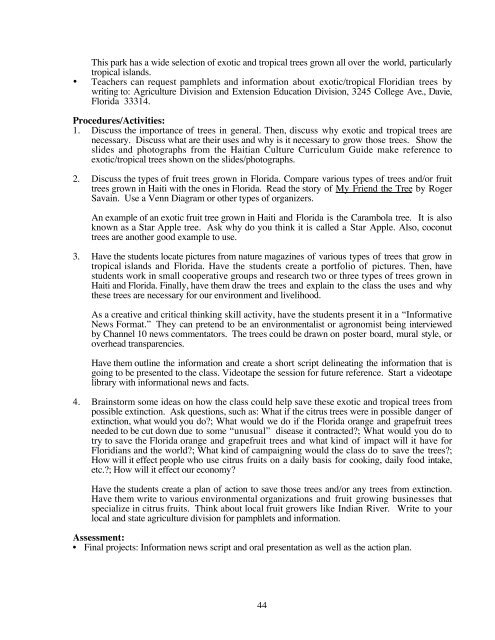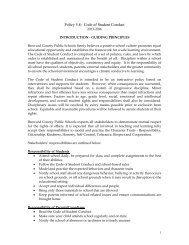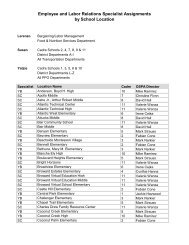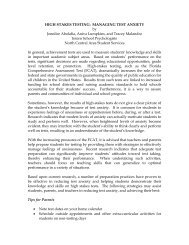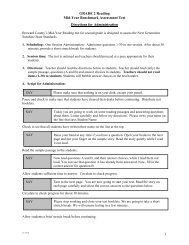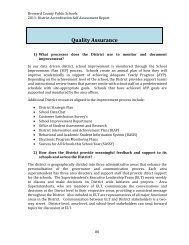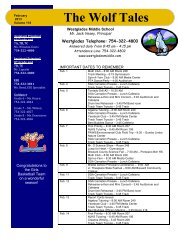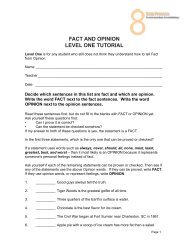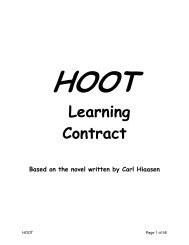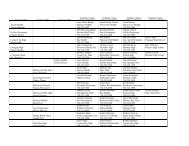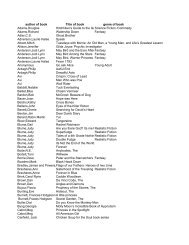Haitian Culture Curriculum Guide
Haitian Culture Curriculum Guide
Haitian Culture Curriculum Guide
Create successful ePaper yourself
Turn your PDF publications into a flip-book with our unique Google optimized e-Paper software.
This park has a wide selection of exotic and tropical trees grown all over the world, particularly<br />
tropical islands.<br />
• Teachers can request pamphlets and information about exotic/tropical Floridian trees by<br />
writing to: Agriculture Division and Extension Education Division, 3245 College Ave., Davie,<br />
Florida 33314.<br />
Procedures/Activities:<br />
1. Discuss the importance of trees in general. Then, discuss why exotic and tropical trees are<br />
necessary. Discuss what are their uses and why is it necessary to grow those trees. Show the<br />
slides and photographs from the <strong>Haitian</strong> <strong>Culture</strong> <strong>Curriculum</strong> <strong>Guide</strong> make reference to<br />
exotic/tropical trees shown on the slides/photographs.<br />
2. Discuss the types of fruit trees grown in Florida. Compare various types of trees and/or fruit<br />
trees grown in Haiti with the ones in Florida. Read the story of My Friend the Tree by Roger<br />
Savain. Use a Venn Diagram or other types of organizers.<br />
An example of an exotic fruit tree grown in Haiti and Florida is the Carambola tree. It is also<br />
known as a Star Apple tree. Ask why do you think it is called a Star Apple. Also, coconut<br />
trees are another good example to use.<br />
3. Have the students locate pictures from nature magazines of various types of trees that grow in<br />
tropical islands and Florida. Have the students create a portfolio of pictures. Then, have<br />
students work in small cooperative groups and research two or three types of trees grown in<br />
Haiti and Florida. Finally, have them draw the trees and explain to the class the uses and why<br />
these trees are necessary for our environment and livelihood.<br />
As a creative and critical thinking skill activity, have the students present it in a “Informative<br />
News Format.” They can pretend to be an environmentalist or agronomist being interviewed<br />
by Channel 10 news commentators. The trees could be drawn on poster board, mural style, or<br />
overhead transparencies.<br />
Have them outline the information and create a short script delineating the information that is<br />
going to be presented to the class. Videotape the session for future reference. Start a videotape<br />
library with informational news and facts.<br />
4. Brainstorm some ideas on how the class could help save these exotic and tropical trees from<br />
possible extinction. Ask questions, such as: What if the citrus trees were in possible danger of<br />
extinction, what would you do?; What would we do if the Florida orange and grapefruit trees<br />
needed to be cut down due to some “unusual” disease it contracted?; What would you do to<br />
try to save the Florida orange and grapefruit trees and what kind of impact will it have for<br />
Floridians and the world?; What kind of campaigning would the class do to save the trees?;<br />
How will it effect people who use citrus fruits on a daily basis for cooking, daily food intake,<br />
etc.?; How will it effect our economy?<br />
Have the students create a plan of action to save those trees and/or any trees from extinction.<br />
Have them write to various environmental organizations and fruit growing businesses that<br />
specialize in citrus fruits. Think about local fruit growers like Indian River. Write to your<br />
local and state agriculture division for pamphlets and information.<br />
Assessment:<br />
• Final projects: Information news script and oral presentation as well as the action plan.<br />
44


